|
|
|
Sort Order |
|
|
|
Items / Page
|
|
|
|
|
|
|
| Srl | Item |
| 1 |
ID:
152722
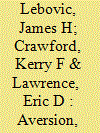

|
|
|
|
|
| Summary/Abstract |
How significant is gender in explaining US public opinion regarding civilian casualties inflicted by the US military during combat and counterterror operations? For answers, we test experimental treatment models on original data obtained from pre-election and post-election surveys conducted as part of the 2014 Cooperative Congressional Election Study. Our evidence supports prior claims that women support military action more reluctantly than men, but, much like men, condition their positions on the accompanying human costs. We find, nonetheless, that women are less likely to support attacks that might bring high numbers of civilian deaths, and, unlike men, base their support on the potential gains from an attack. Indeed, we conclude that differences in support for military action between men and women stem more from the perceived benefits of the attacks than from human costs.
|
|
|
|
|
|
|
|
|
|
|
|
|
|
|
|
| 2 |
ID:
112717


|
|
|
|
|
| Publication |
2012.
|
| Summary/Abstract |
China has recently undergone a series of reforms on higher education aimed at raising the level of human capital. However, relatively little is known about returns to higher education (i.e. college premium) and how it varies across population in China over time. In this paper, we contribute to the literature by examining college premium in urban China during the period of 1995-2002. We also explore the differences in college premium by gender and by sector. To isolate the causal effects of college education, we employ a novel instrumental variable approach based on heteroskedasticity in college decision to circumvent potential endogeneity and measurement error problems. Our results imply a much larger college premium and a greater growth in the college premium relative to their OLS counterparts, consistent with the general literature on returns to education. More interestingly and starkly contrasting to the existing studies using OLS in the Chinese context, our results imply that (1) the college premium is larger for women than for men in the early stage of economic reforms, but the difference decreases and becomes statistically insignificant over time; (2) the college premium is larger for workers in the state-owned enterprises than that in the non-state-owned enterprises during the early stage of economic reforms; this gap is, however, reversed in the later stage. We discuss potential reasons for these results.
|
|
|
|
|
|
|
|
|
|
|
|
|
|
|
|
| 3 |
ID:
188155
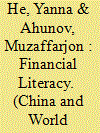

|
|
|
|
|
| Summary/Abstract |
We scrutinized determinants of financial literacy in China – the largest developing economy, and one with a rapidly expanding financial landscape. We used the China Household Finance Survey's 2013 and 2015 waves, which included the so-called “Big Three” financial literacy questions that test individuals' understanding of compound interest rates, inflation, and risk. We found that financial literacy in the country was low. Our results showed that, unlike in developed countries, risk literacy in China was high and financially illiterate people's awareness of their own lack of financial skills was high. Importantly, we showed that female, old, less educated, and low-income people were increasingly lagging in gaining financial skills. This was especially true for the western and central regions of China. Our study complements a limited number of studies on the financial literacy of the middle class in developing economies.
|
|
|
|
|
|
|
|
|
|
|
|
|
|
|
|
| 4 |
ID:
175836
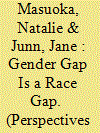

|
|
|
|
|
| Summary/Abstract |
Scholarship on women voters in the United States has focused on the gender gap, showing that, since the 1980s, women are more likely to vote for Democratic Party candidates than men. The persistence of the gender gap has nurtured the conclusion that women are Democrats. This article presents evidence upending that conventional wisdom. It analyzes data from the American National Election Study to demonstrate that white women are the only group of female voters who support Republican Party candidates for president. They have done so by a majority in all but 2 of the last 18 elections. The relevance of race for partisan choice among women voters is estimated with data collected in 2008, 2012, and 2016, and the significance of being white is identified after accounting for political party identification and other predictors.
|
|
|
|
|
|
|
|
|
|
|
|
|
|
|
|
| 5 |
ID:
126712
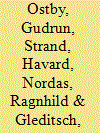

|
|
|
|
|
| Publication |
2013.
|
| Summary/Abstract |
Many studies report lower academic productivity among women. But are women less likely to get their research published in the first place? The evidence for potential gender bias in publication and impact is mixed. This article examines the gender dimension of scientific publication in international relations (IR) based on submission data for Journal of Peace Research for the period 1983-2008. It examines the gender gap in submissions and explores whether the perceived merit of a research paper is affected by the gender of the authors and reviewers. It also investigates whether the gender of the first author influences citation counts. The data show a clear but declining gender gap. They do not indicate any significant gender bias in publication success or citations.
|
|
|
|
|
|
|
|
|
|
|
|
|
|
|
|
| 6 |
ID:
127146
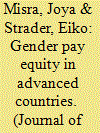

|
|
|
| 7 |
ID:
103833
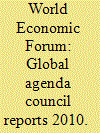

|
|
|
|
|
| Publication |
Geneva, World Economic Forum, 2010.
|
| Description |
358p.
|
|
|
|
|
|
|
|
|
|
|
|
Copies: C:1/I:0,R:0,Q:0
Circulation
| Accession# | Call# | Current Location | Status | Policy | Location |
| 055930 | 341.2322/WOR 055930 | Main | On Shelf | General | |
|
|
|
|
| 8 |
ID:
182793
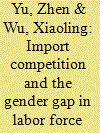

|
|
|
|
|
| Summary/Abstract |
Does import competition explain the gender gap in labor force participation? The distributional consequences of trade liberalization have fascinated decades of economists and policy makers. Using a difference-in-differences strategy, we find that import competition enlarges the gender gap in labor force participation in China during 1990 and 2005. The results are robust to various identification challenges, including contemporaneous confounders, treatment effect heterogeneity, and spatial correlations in standard errors. The magnitude of the gender-differential effects of import competition on labor force participation grows by age, and peaks for people aged 46–50. The household division of labor appears to explain the gender-differential effects. Import competition also leads to a relative contraction of female-intensive industries, and reduces the share of female employees in each industry.
|
|
|
|
|
|
|
|
|
|
|
|
|
|
|
|
| 9 |
ID:
161846
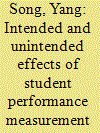

|
|
|
|
|
| Summary/Abstract |
In the past few decades, the Chinese Ministry of Education has promoted “suzhi jiaoyu” (quality education) reforms. However, little is known about their impact. This paper evaluates an important component of the reforms that replaces using total scores with a letter grade system in high school admissions. I find that this change in student performance measurement achieved its intended goal of balancing learning across subjects but hindered high achievers with imbalanced performance. This paper also discusses how the measurement reform influenced the gender gap in achievements.
|
|
|
|
|
|
|
|
|
|
|
|
|
|
|
|
| 10 |
ID:
153243
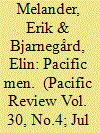

|
|
|
|
|
| Summary/Abstract |
The gender gap in attitudes to foreign policy is well established in public opinion literature. Studies have repeatedly reported that women tend to be more peaceful and less militaristic than men. This article reexamines attitudes of individuals in relation to foreign policy and pits the gender gap against the largely forgotten feminist gap. We argue that the individual-level relationship between gender equality attitudes on the one hand, and tolerance and benevolence on the other, is under-researched, but also that key contributions about the effects of feminism have been mostly ignored in research on the gender gap in public opinion. We return to the notion of a causal relationship between gender equality attitudes, and peaceful attitudes, and of a feminist gap that also exists among men. In a series of novel empirical tests, we demonstrate that attitudes to gender equality, not biological sex, explain attitudes towards other nationalities and religious groups. Using individual-level survey data from five countries around the Pacific: China, Indonesia, Japan, South Korea, and the United States of America, we show that both men and women who reject gender equality are much more hostile both to other nations and to minorities in their own country.
|
|
|
|
|
|
|
|
|
|
|
|
|
|
|
|
| 11 |
ID:
127151
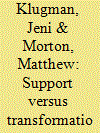

|
|
|
| 12 |
ID:
143294


|
|
|
|
|
| Summary/Abstract |
Recent studies have identified correlational associations linking terrorism and females’ standing in the labor market. Theories have been proposed to explain these associations. Some concluded that women’s participation in the labor force could be the driver that moves terrorism; others proposed that terrorism motivates the deviations in the labor force. No study has adequately explored causality and the direction of this association. Using a panel data set of 165 countries and terrorism data from 1980 to 2007, we find that terrorist attacks decrease female labor force participation and increase the gender gap between male and female labor force participation. By exploiting variation across countries and time, we are able to identify and quantify these effects; we are also able to address endogeneity concerns by using two novel instrumental variable approaches. The results are statistically significant and robust across a multitude of model specifications.
|
|
|
|
|
|
|
|
|
|
|
|
|
|
|
|
| 13 |
ID:
133933
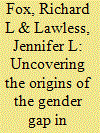

|
|
|
|
|
| Publication |
2014.
|
| Summary/Abstract |
Based on survey responses from a national random sample of nearly 4,000 high school and college students, we uncover a dramatic gender gap in political ambition. This finding serves as striking evidence that the gap is present well before women and men enter the professions from which most candidates emerge. We then use political socialization-which we gauge through a myriad of socializing agents and early life experiences-as a lens through which to explain the individual-level differences we uncover. Our analysis reveals that parental encouragement, politicized educational and peer experiences, participation in competitive activities, and a sense of self-confidence propel young people's interest in running for office. But on each of these dimensions, women, particularly once they are in college, are at a disadvantage. By identifying when and why gender differences in interest in running for office materialize, we begin to uncover the origins of the gender gap in political ambition. Taken together, our results suggest that concerns about substantive and symbolic representation will likely persist.
|
|
|
|
|
|
|
|
|
|
|
|
|
|
|
|
| 14 |
ID:
169039


|
|
|
|
|
| Summary/Abstract |
The gender gap in national and local politics is an important problem in numerous countries. Two explanations for the deficit experienced by female politicians relate to demand for women’s representation by political parties and by voters. We argue that the gender gap stems from party-based limitations in local politics. Women do not compete in local politics because relevant parties do not nominate them. We present original data on mayoral candidates who ran in the 2009 and 2014 Turkish local elections. Our findings show that women are less likely to be nominated for office and reasons for this gap originate from party choices rather than lack of electoral support for women.
|
|
|
|
|
|
|
|
|
|
|
|
|
|
|
|
|
|
|
|
|